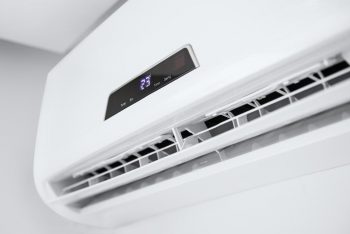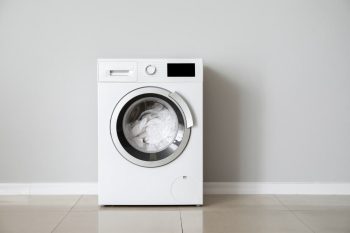
Ceiling fans are a staple in many homes and businesses, providing a cost-effective and energy-efficient way to cool down spaces. One key component that determines the efficiency and performance of a ceiling fan is the material of its blades. In this in-depth article, we will explore the different materials used in ceiling fan blades, their impact on the fan’s performance, and what you should consider when choosing a ceiling fan.
Ceiling fan blades are typically made from three main materials: metal, wood, and plastic. Metal blades are durable and provide strong airflow, but can be noisy and prone to rust. Wooden blades offer a traditional look but may not be as durable in damp environments. Plastic blades are lightweight, durable, and resistant to moisture and rust, making them suitable for outdoor use. The choice of material can significantly impact the fan’s performance, noise level, and durability.
Materials Used in Ceiling Fan Blades
Ceiling fan blades are made from a variety of materials, each with its own set of advantages and disadvantages. Let’s take a closer look:
1. Metal Blades
Metal ceiling fan blades, typically made from aluminum or steel, are known for their durability and strength. They are common in industrial settings or in rooms with high ceilings because they can withstand extreme temperatures and provide strong airflow. However, they can be heavier and noisier than other options, and may rust in outdoor or coastal areas.
2. Wooden Blades
Wooden blades offer a traditional and elegant look, with various shades and designs available. They are often finished with a protective sealant or varnish to prevent warping or other damage. High-quality wooden blades are made from furniture-grade hardwood and may even feature hand-carved designs. However, they may not be as durable as metal or plastic blades, especially in damp environments.
3. Plastic Blades
Plastic ceiling fan blades, often made from ABS plastic, are lightweight, durable, and affordable. They are resistant to moisture and rust, making them suitable for outdoor or damp environments. Plastic blades can also be molded and dyed, offering a wide range of design options.
Impact of Blade Material on Fan Performance
The material of the fan blades can significantly impact the performance of a ceiling fan. Metal blades, due to their weight, require a stronger motor to operate efficiently, but they can provide strong airflow. On the other hand, plastic or timber blades are generally quieter and better suited for smaller rooms or outdoor use.
Durability is another crucial factor. Metal blades are generally more robust and resistant to warping compared to wooden blades. However, they may rust in outdoor, coastal, or humid areas. Plastic blades, especially those made of ABS plastic, are resistant to moisture, rust, and sagging, making them suitable for damp or corrosive environments.
Choosing the Right Ceiling Fan Blade Material
When choosing a ceiling fan based on blade material, consumers should consider factors such as aesthetics, durability, noise, weight, maintenance, outdoor compatibility, and efficiency. Each material has its advantages and disadvantages, so it’s essential to evaluate these factors based on the specific environment and personal preferences.
For example, if you’re looking for a fan for a large, high-ceilinged room, a fan with metal blades may be a good choice. If you’re looking for a fan for a small bedroom, a fan with quieter wood or plastic blades may be more suitable. If you live in a coastal area with high humidity, a fan with plastic blades may be the best choice due to its resistance to rust and moisture.
In terms of cost, there can be significant price differences between ceiling fans with different blade materials. Typically, fans with metal blades are more expensive than those with wooden or plastic blades.
Conclusion
In conclusion, the material of the ceiling fan blades plays a significant role in determining the fan’s performance, durability, noise level, and cost. Whether you prefer the natural look of wood, the modern feel of metal, or the versatility of plastic, understanding the characteristics of each material can help you make an informed decision when choosing a ceiling fan. Remember, it’s not just about choosing the right fan, but also about choosing the right fan for your specific needs and environment.
Frequently Asked Questions
What is ABS plastic?
ABS plastic, also known as Acrylonitrile Butadiene Styrene, is a type of thermoplastic that is known for its toughness, impact resistance, and ability to withstand high temperatures. It’s commonly used in ceiling fan blades due to its durability and resistance to rust and moisture.
Can I replace the blades of my ceiling fan?
Yes, it’s possible to replace the blades of your ceiling fan. However, it’s important to ensure that the new blades are compatible with your fan’s motor and mounting brackets. It’s recommended to refer to your fan’s manual or consult with a professional.
Is there a significant difference in energy use between different blade materials?
The material of the blades might not significantly affect the energy use of a ceiling fan. The energy consumption is more dependent on the fan’s motor efficiency and the speed at which it is run.
Can I use a ceiling fan with metal blades outdoors?
While metal blades are durable and can withstand extreme temperatures, they may not be suitable for outdoor use in coastal or humid areas due to the risk of rusting. If you wish to use a fan outdoors or in a damp environment, consider choosing a fan with blades made from a rust-resistant material like ABS plastic.
What is the average lifespan of ceiling fan blades?
The lifespan of ceiling fan blades can vary based on the material and the conditions they are exposed to. However, with proper maintenance, ceiling fan blades can generally last for about 10-15 years.












